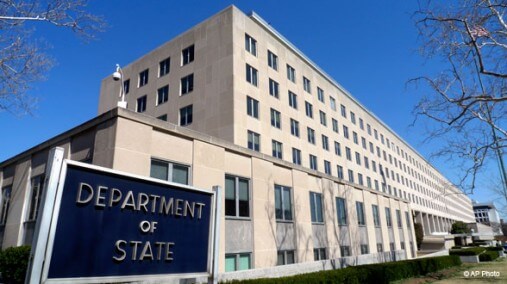I’ve promised to produce a primer for applicants taking the FSOT in Jan-Feb 2017. One of the first steps you take is to choose your career track, also known as your cone. It’s a big choice as it will be how you are judged, how you are promoted, and how you spend your 20+ years in the Foreign Service. Perhaps, most importantly, once you select your career track, there’s no changing. (well, okay, not quite, but it is pretty important).
When the Written Exam Was Actually Written
In 1985, circa the Dark Ages, when I took the “written” FSOT, it really was a written exam with answer sheets, N0. 2 pencils, and stern admonitions not to mark outside the ovals. My score was rated across the four cones — Political, Economic, Consular, Administrative (now Management) — and as I recall you could pick any cone to secure a place on one of the career track registers. Most but not all applicants selected the cone in which they scored highest. (Until 1999, PD officers worked for the U.S. Information Service, a separate agency.)
I selected Consular, which was my highest score, and after more than two years I got an offer. Yes, the process was ridiculously long back in the old days. It has speeded up considerably.
Today, the five career tracks open to Foreign Service Officers (FSO) are:
- Consular
- Economic
- Management
- Political (the one nearly everyone aspired to join back in my day. It’s probably still the case.)
- Public Diplomacy
Picking your Career Track
State insists that you pick your career track before you take the Foreign Service Exam. Many (most?) applicants have no idea what an FSO does much less in his or her career track. We may not like it, but we have to accept it. “Theirs not to reason why,
Theirs but to do and die” and all that.
For all the Department’s shortsightedness on coning and other issues, they do provide you with a huge amount of online material to help you make the career track decision — quizzes, video interviews, descriptions of the various cones, and even an infographic detailing what officers do in their tracks
I encourage you to read everything on the Careers.State.Gov site. You will find additional insight through online discussions, especially at the Yahoo Group – Becoming a Foreign Service Officer. This is an excellent resource and can help you in deciding your career track and other questions as you continue through the selection process. Or it could make your head explode because there is just so much information and not all of it correct.
After you’ve reviewed this information, and you still have doubts or questions about your cone, take the Department’s quiz, Which Career Track is Right for You? , to help you winnow down your choices.
Diplomat-in-Residence: A Great Resource
When you complete the quiz and have an idea of the track you lack it’s time to reach out to real FSOs and ask them questions. They are the Diplomats-in-Residence, 16 or so FSOs and Specialists the Department has assigned around the country to answer questions and to drum up interest in the Foreign Service as a career.
They provide an excellent way to nail down your career track. As you might guess, the quality of these sources varies, but I’ve known many of top-flight FSOs who have served as Diplomats-in-Residence. Although the Department may frown on my advice, I do recommend that you reach out not just to the DIR in your region, but any other who by cone, sex, or minority status may help you not only with your choice of career tracks, but also whether the Foreign Service would be a good fit for you.
DIRs are located at universities and colleges throughout the United States, but every candidate can and should make use of them.
Can I Change My Career Track When (or After) I Join?
No! Err, maybe…
If you show up at A-100 demanding a change in cone, the answer from the State Department will be “no.” The Department tries to cushion the blow by saying that FSOs throughout their careers serve in out-of-cone assignments throughout their careers and the higher you the less your career track matters. For instance, I was a consular track officer, but in my final 12 years in the Foreign Service, I was in multifunctional (sic) jobs — twice as a DCM and twice as a Deputy Assistant Secretary (DAS).
The Department doesn’t want you to get your hopes up, but in truth a few mid-level FSOs do change career tracks. Openings in the tracks do open up, but if you think you can join the Political track, you’re dreaming.
Seriously, there are lateral transfers between Consular and Management, and even some Political and Economic FSOs who grow tired of working the cocktail/reception circuit and decide to join the Consular and Management tracks, which have a more “9-5” schedule.
So, no, if you are a Management or Consular or PD Officer, you will not find a way to join the Political ranks because there are no/no vacancies at mid-level. Similarly, the Economic track only rarely seeks mid-level FSOs, and you be so far behind in competing with your new peers for promotion, it’s probably not a wise career move. I don’t have a lot of information on the Public Diplomacy career track, but it is very attractive at the junior and mid-level ranks because the cone features work as an Information Officer (spokesperson), Cultural Affairs Officer (exchanges, cultural activities, spending money to preserve important historical sites) or the Public Affairs Officer, the big kahuna who manages the mission’s entire Public Diplomacy program. I don’t see many PD Officers leaving their career track.


Recent Comments